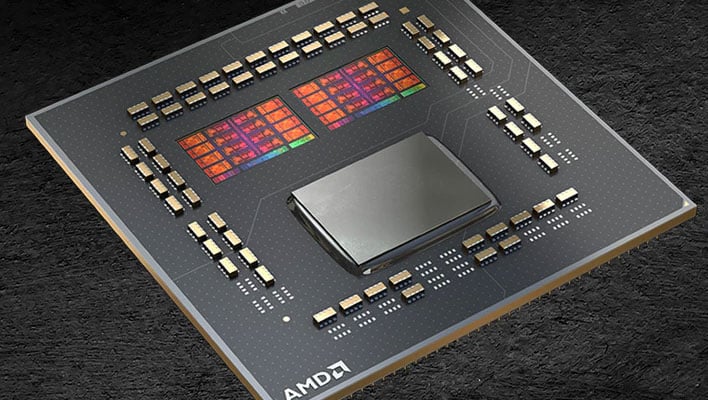Heads-Up PC Builders, AMD Ryzen 7000 Memory Speeds May Tank With These Configs

We won't really know the truth of the matter until we have chips and boards in hand, but if there is a "catch" with the red team's upcoming Zen 4-based Ryzen 7000 series processors, we may have found it buried in the company's product pages for the parts. Listed down in the specifications section under "Connectivity", we find the little chart below:

So what's the big deal? Running two-DIMMs-per-channel has always resulted in a memory speed reduction, right? Yes, that's usually true, but the concerning part here is the size of the cut. 3600 MT/s is slower than any DDR5 on the market; the slowest official DDR5 standard is right at 4800 MT/s.
Does this mean that you'll be restricted to 3600 MT/s when using four DDR5 DIMMs on Socket AM5? Not necessarily. After all, AMD has proudly boasted that its CPUs can run memory speeds well higher than 5200 MT/s. It's just that doing so is overclocking, and indeed, you'll likely be able to run your memory faster than 3600 MT/s when using more than one DIMM per channel. It's just that it isn't officially supported; it's technically "overclocking."

From PCPartPicker.
We feel it's important to point out that this isn't likely to matter for most users. DDR5 DIMMs with 32GB capacity are about the same price-per-gigabyte as 16GB modules, which means that outfitting a system with 64GB of RAM won't break the bank—or at least, won't be outrageously expensive. 64GB of RAM should serve for most desktop use cases—it's certainly enough for gaming—although content creators may benefit from still more memory.
In that case, it may actually end up that using four DIMMs to end up with 128GB of memory is still a net performance gain, even if the system has to drastically reduce transfer rates to maintain signal stability. After all, running out of RAM and having to swap to disk is going to result in much worse performance than just running your RAM at a lower speed.
The bigger worry may be for AMD's upcoming EPYC "Genoa" processors, which will use the very same Zen 4 architecture. It's very common for servers to want gobs and gobs of memory. While those processors will work with with eight-channel memory, if they can only reach maximum performance with half their slots filled then it may put a damper on adoption.

Another concern here is the effect that the lower memory clock might have on the Ryzen Infinity Fabric clock. On extant Ryzen processors, the memory controller clock is inextricably linked to the memory clock itself, and those two are usually linked tightly with the fabric clock as well. However, Zen 3 processors on some motherboards do have the ability to uncouple these and run the fabric clock at a different speed than the memory. It's possible that AMD has expanded this capability in Zen 4.
It's also possible, if not likely, that AMD will improve the performance of Ryzen 7000 chips running with 4 DIMMs in future firmware updates. The Zen 2-based Ryzen 3000 processors saw huge leaps in their memory compatibility as time went on thanks to continual firmware updates from AMD, and likewise with the Zen 3 family. This may be a matter of AMD simply focusing on the most important use case first to get the processors out the door sooner, rather than later.
In any event, you can be sure that we're going to see the effects of running four DIMMs with Zen 4 when we have the chips in hand.

